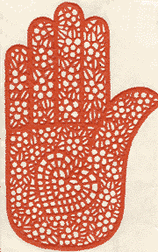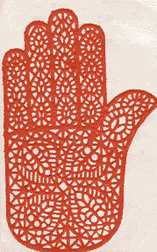|
With popularity often comes the attempt to “cash in” on the latest trend. Sadly, commercial henna tattooing is falling prey to this syndrome and people who wish to try this ancient form of body art must take care when doing so. In an attempt to satisfy the desire for a quick result, consumers must now watch out for “black” henna tattoos, which have become dangerous due to introducing a chemical ingredient that has nothing to do with the henna itself.
The danger here involves a chemical stain, in the form of commercial hair dye mixed into the henna paste. This ingredient is p-phenylenediamine, abbreviated as PPD. Natural henna paste runs in color from green to brown, or any blended shade in between, and often contains essential oils like eucalyptus, tea tree or other plant oils. The mixture containing PPD comes out black and this additive does not have any smell.
Traditionally, henna body painting works due to an endothermic reaction, meaning the mixture stains by maintaining warm, moist contact with the skin. To obtain a dark stain, the paste should be left on the skin for many hours, even overnight if possible. By adding this artificial dye, artists are attempting to make a paste that will stain in an hour or less. The problem is that PPD is one of the top twenty allergens in the country, and in rare instances, people are literally scarred for life.
When you purchase a box of home hair dye product and read all the instructions, there is included a brief step before you color your hair where you are asked to do a “patch test.” Here you mix a tiny amount of the hair c color and put it on your arm. If you get an adverse skin reaction, you are requested to not use this product on your head and hair. The henna artists using PPD are not testing for skin reactions and are using this product outside recommended federal usage guidelines. Concentrations of PPD found in the black henna paste studied at the NYU School of Medicine this past summer contained nearly ten times the amount allowed in hair dye.
Adverse reactions to PPD can include stinging sensations, with a red rash, swelling, blisters and surface oozing. In rarer cases, the skin reaction is so severe it leaves permanent scarring, not at all what the customer originally wanted from a temporary piece of body art. Other medical professionals feel that lifelong cross-sensitivities to similar chemicals may be related to reactions to black henna. Health officials in Canada put out a general alert this past summer but so far in the USA, the issue has been confined to the State of Florida where this form of skin art is found prolifically at beaches.
|
|


